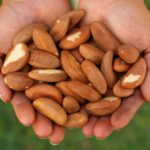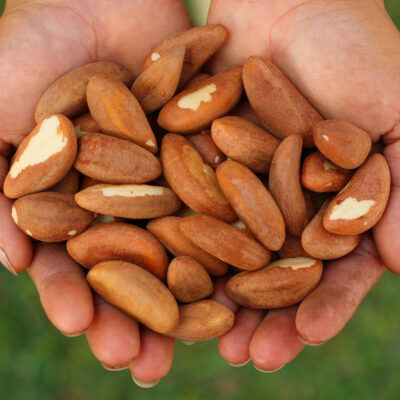introduction
Imagine spending weeks carefully growing your favorite mushrooms, only to find your cultivation covered in a fuzzy, grayish web. That’s not a Halloween decoration; it’s something much more frustrating — cobweb mold. If you’re into mushroom growing, this pesky invader is one of your worst enemies. But what exactly is cobweb mold? Why does it show up, and more importantly, how can you get rid of it? Let’s dive into everything you need to know about this unwelcome guest in your mushroom farm.
What is Cobweb Mold?
Cobweb mold is a type of fungal contamination that affects mushroom crops, especially in indoor environments. It gets its name from the thin, wispy growth that resembles a spider’s web. Unlike the mushrooms you’re growing, which take time to develop, cobweb mold spreads rapidly. In just a few days, it can take over your entire crop if left unchecked.
Cobweb mold primarily appears as a fluffy, grayish-white substance. Over time, it can darken, turning gray or even black. However, its fast spread is the real issue. If you notice your mushrooms suddenly covered with a web-like layer that seems to grow overnight, there’s a good chance cobweb mold is the culprit.
Why Does Cobweb Mold Appear?
Cobweb mold thrives in specific conditions, and unfortunately, these are often the same conditions in which mushrooms flourish. Warm, humid, and poorly ventilated environments are like paradise for cobweb mold. It especially enjoys areas with stagnant air, where it can grow freely without disruption.
In many cases, cobweb mold appears when there’s too much moisture in the growing area. If the humidity is too high or the air circulation is poor, you’re more likely to see this nuisance. Additionally, contamination can occur through spores that enter your growing environment, often carried in on your clothing, tools, or even the air.
How to Identify Cobweb Mold?
So, how do you know if what you’re seeing is cobweb mold and not just a regular part of your mushroom’s life cycle? It’s a common question, especially for beginners. One key way to identify cobweb mold is by its rapid growth. If you notice a grayish, fluffy substance spreading over your mushrooms or substrate overnight, that’s a strong sign of cobweb mold.
Another giveaway is the appearance itself. While mushroom mycelium can also be fluffy and white, it usually has a denser structure. Cobweb mold is lighter and more thread-like, almost as if you could brush it away with your hand (though you shouldn’t!). Moreover, mycelium tends to grow more slowly and in a more organized pattern, while cobweb mold spreads haphazardly.
The Risks of Ignoring Cobweb Mold
Cobweb mold may not sound as harmful as other types of fungal contamination, but that doesn’t mean you can ignore it. Left unchecked, cobweb mold can quickly overwhelm your mushroom crop, leading to significant losses. Not only does it compete for the same nutrients that your mushrooms need to grow, but it can also stunt their development.
In severe cases, cobweb mold can prevent mushrooms from fruiting altogether. The mold can suffocate the growing mushrooms, leaving you with little to no yield. Additionally, it weakens the substrate, reducing its overall health and viability. For mushroom growers, this is a disaster waiting to happen.
Preventing Cobweb Mold
Prevention is always better than dealing with a full-blown mold invasion. Fortunately, there are several steps you can take to prevent cobweb mold from taking over your mushroom operation.
First, proper air circulation is essential. Since cobweb mold thrives in stagnant air, ensuring that your growing space has good airflow can reduce the chances of mold spores settling and multiplying. If you’re growing indoors, consider using fans or other ventilation systems to keep the air moving.
Second, maintaining optimal humidity levels is crucial. While mushrooms need a certain amount of moisture to grow, excessive humidity creates the perfect environment for cobweb mold. A hygrometer can help you monitor humidity levels, ensuring they stay in the ideal range for mushroom growth but not mold.
Finally, hygiene is critical. Always clean your tools, containers, and growing area before starting a new crop. Wear clean clothing, and wash your hands before handling your mushrooms or substrate. This will minimize the risk of introducing mold spores into your environment.
Treating Cobweb Mold: What To Do If It Appears
Despite your best efforts, cobweb mold can sometimes still find a way into your growing area. But don’t panic — there are effective ways to get rid of it.
One of the most common treatments for cobweb mold is hydrogen peroxide. A diluted solution of hydrogen peroxide (about 3%) can be sprayed directly onto the affected areas. This will help kill the mold without harming your mushrooms. Be sure to use the right concentration, as too strong a solution can damage the mushrooms or substrate.
In addition to treating the mold, you’ll want to address the conditions that allowed it to grow in the first place. Improve ventilation, lower humidity levels, and make sure that the growing area is clean and free from additional contamination. You may also need to adjust your substrate or fruiting conditions to ensure a healthier environment for your mushrooms.
Organic Methods to Control Cobweb Mold
If you prefer organic methods, there are some natural treatments you can try. Essential oils like tea tree oil or clove oil have antifungal properties and can help control mold growth. A few drops in water, sprayed on affected areas, might provide a solution without introducing harsh chemicals into your growing space.
However, natural treatments are not always as fast or effective as hydrogen peroxide. You may need to repeat the application several times, and results may vary depending on the severity of the mold infestation.
When Should You Discard Contaminated Substrate?
Unfortunately, there are times when mold has spread too far, and the best course of action is to discard the contaminated substrate. If more than half of your substrate is affected, or if the mold continues to grow despite your efforts to treat it, it’s time to start fresh.
It can be disheartening to throw away a contaminated crop, but it’s often necessary to prevent further contamination in future grows. Make sure to clean and sterilize the entire growing area before beginning a new batch to avoid repeating the problem.
Final Thoughts on Cobweb Mold
Cobweb mold is a common but frustrating issue for mushroom growers. However, with a little knowledge and some proactive measures, you can protect your crop from this fast-spreading contaminant. By maintaining a clean, well-ventilated environment and keeping a close eye on humidity levels, you can significantly reduce the chances of cobweb mold ruining your mushrooms. And if it does show up? You now have the tools to treat it quickly before it spreads. Happy growing







